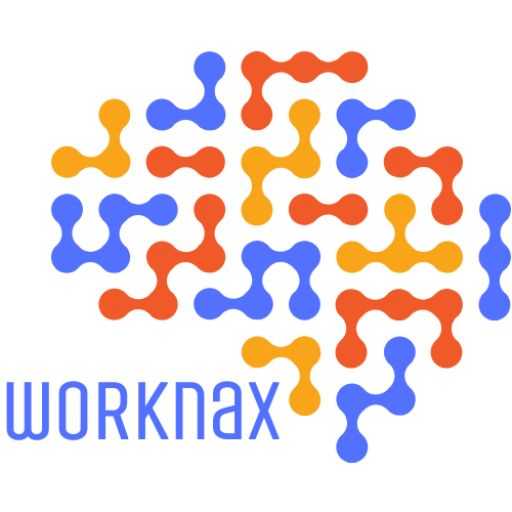Anúncios
accelerate professional skills is the starting point for this short guide. Do you ever wonder which small, practical moves will change how others see your work and your career?
The modern world of work values more than technical know-how. Communication, time management, decision-making, and emotional intelligence shape your day-to-day success.
These templates are built for real tasks: emails, meetings, project plans, and quick reflections. Each tool is lightweight so you can try one in a short break and keep momentum this week.
Use a template to clarify your goals, build confidence, and track steady development. No promises of overnight change—just clear steps, examples, and checklists you can tailor. If you want extra support, pairing a template with a mentor or a course can help you keep growing.
Introduction: Templates that help you accelerate professional skills today
Small routines at work compound into visible progress over time. This section explains what we mean by professional skills and how to use compact templates to make steady gains.
Why these abilities matter: Professional skills combine behaviors, mindsets, and capabilities like communication and problem-solving. They help you perform well when the job or market is in flux. High performers stand out by building relationships, leading through change, and solving tough problems.
How to use these templates for steady, realistic growth
Start small. Pick one template and use it for a week. Track what worked and what didn’t. Add a second template the next week. This paced way of learning turns insights into repeatable actions.
Each template includes prompts or checklists grounded in current workplace insights. Use them to focus on the right things at the right time. Expect progress to take practice and feedback. Mentors or short courses can help you move faster, but they do not guarantee instant success.
Skills-based career planning templates
A clear map of what you know and what you need makes career moves less risky and more intentional. Use these compact templates to turn experience into a practical plan you can update each week.
Career skills map
List your core skills, rate proficiency, and add a one-line evidence item from your work. Then pull 5–7 recent job postings for your target position and note required skills next to yours.
- Inventory: list current skills and one example of experience for each.
- Gap check: mark skills missing for your target role.
- Prioritize: pick two skills to pilot this quarter.
Quarterly growth roadmap
Think big, start small. Set two pilot goals tied to the job or position you want. Define outcomes, time estimates, and a minimal scope you can finish alongside daily work.
- Goal, outcome, 6–8 week timebox.
- Success metric and one quick review with a mentor.
Reliable skills data checklist
Sources: job descriptions, team OKRs, industry frameworks, internal project records.
Validate with a manager using a short meeting or a shared document. Update your map for 30 minutes each week.
Responsible AI prompts
Use AI to cluster similar skill labels, surface duplicates, and draft role summaries. Review and correct every output before storing it in your company system.
“Start with one team or role family and iterate — small pilots build trust and momentum.”
Communication toolkit templates
Clear, repeatable message frameworks help you get results without extra meetings.
Use these compact templates to cut confusion, save time, and make it easy for colleagues to act.
Clear email framework: Purpose, action, deadline
Subject: [One-line context — Ask — Due date]
- Context: one sentence that explains why this matters.
- Ask: the specific request and needed tasks, with an owner.
- Deadline: date and time the recipient can rely on.
Meeting agenda and wrap-up notes template
Set goals and time boxes. Assign roles (lead, note-taker) and list the top questions to decide.
- Goal, 5–7 minute timebox
- Discussion points and decision questions
- Wrap-up: decisions, owners, deadlines
Stakeholder presentation storyline canvas
Use simple language and a short visual: purpose, risks, options, next steps. Aim to align leadership quickly.
- Checklist for tone and brevity: cut filler and front-load the outcome.
- Async update tip: share a brief summary and link to notes so others stay informed without extra meetings.
- Quick review habit: reread from the reader’s view to confirm tasks and deadlines are unmistakable.
“Active listening and audience-aware messages improve outcomes across jobs and teams.”
Time management and prioritization templates
When you shape your week around impact and capacity, you reduce rushes and steady your output. Use a simple, repeatable system that matches real energy, protects boundaries, and favors steady gains over hype.
Weekly priority matrix with capacity blocks
Start by sorting tasks into a 3×3 matrix: high/medium/low impact vs. urgent/not urgent/planned. Then assign capacity blocks that reflect how many hours you truly have for focused work each day.
- Block sizing: Estimate tasks in hours, slot them into 1–3 hour blocks, and reduce scope when a task exceeds its block.
- Protect deep focus: Reserve two weekly deep-focus blocks for your top priorities and mark them as non-negotiable.
- Batch small work: Group quick items into a single daily block to avoid context switching and preserve flow.
Daily review and realistic buffers
Spend five minutes each day noting what moved forward, what slipped, and why. Add buffer time for handoffs and approvals so deadlines match real work dynamics.
- Set meeting limits and insist on agendas.
- Decline low-value items respectfully to protect your career goals.
- Reserve one weekly block for a short development task that grows a skill for the next role.
“Effective time management boosts reliability, lowers burnout risk, and improves outcome quality.”
Problem-solving and data-informed decision templates
The best problem-solvers use a small set of forms that reduce bias and speed clarity. Use concise templates to move from issue to insight, with clear ownership and review points.
Issue-to-insight worksheet: Define, analyze, decide
Start by naming the problem in one sentence. List three possible root causes and three options to test.
- Definition: one-line problem and affected stakeholders.
- Analysis: root causes, quick evidence, and one simple test.
- Decision: chosen option, owner, review date.
Lightweight data plan: Metrics, sources, visuals
Pick one metric that validates progress. Note the source, collection cadence, and a single chart idea that tells the story.
Post-mortem journal and questions
Record outcomes, what worked, what didn’t, and next ideas. Add a short checklist of questions to test assumptions and align with company goals.
- Who owned the choice and the follow-up?
- Which constraints shaped the decision?
- What one training or time block will build the needed skill this week?
“Aim for faster learning loops, not perfect answers—iterate with clear responsibility and honest notes.”
Leadership and coaching templates
Leadership that balances empathy and structure helps teams learn faster. Use a few reliable forms to run regular 1:1s, make ownership visible, and coach growth without adding bureaucracy.
One-on-one conversation guide and notes
Quick agenda: progress, blockers, feedback, career goals.
- Two wins (60 seconds each).
- One blocker and an owner to remove it.
- Career note: one short action and a follow-up date.
Team goals and ownership board
Make outcomes, owners, milestones, and risks visible so everyone sees handoffs and priorities.
- Outcome, owner, milestone (3 dates).
- Risk level and mitigation owner.
- Capacity check: level, time estimate, and stretch area.
Coaching checklist: ask open questions, listen actively, agree on next steps that match a teammate’s preferred way to grow.
“Document decisions and revisit them in 1:1s to build clarity and trust.”
Adaptability and change-readiness templates
When systems shift, quick, humane checks help you protect delivery and people’s wellbeing.
Use a one-page change impact scan to assess scope, urgency, workflows, and who needs updates or support. Keep entries short: scope (local/team/company), urgency (now/this week/this month), and affected processes.
Change impact quick scan and response plan
Quick scan:
- Scope — who and what changes.
- Urgency — timeline and blockers.
- People — who needs training, briefs, or handoffs.
Response plan (near-term):
- Communication steps: who tells whom, when, and how.
- Role adjustments: temporary owners and backups.
- Near-term job checklist: stabilize delivery, list immediate tasks, set 48–72 hour owners.
Prompt your team to list risks, quick wins, and one skill to practice next week. Leaders should set clear priorities and leave time for questions.
“Keep the plan humane: protect people’s capacity while you manage the work.”
Do a 30-day after-action review to note what helped, what hindered, and how the workforce can prepare for the future. Capture lessons in a shared doc so the talent and leadership can reference them next time a similar job or industry shift appears.
Teamwork and collaboration templates
When your team names expectations, handoffs get smoother and relationships hold up under pressure. Use a single-page collaboration contract to set shared goals, define each role, and make decision rights clear.

- Purpose & goals: one-paragraph aim and success metric.
- Roles & decision rights: who owns which tasks and who signs off.
- Handoffs & tools: where to find work, file names, and handover steps.
- Norms: meeting cadence, update frequency, and response time expectations.
Add a short section about conflict routes.
- Resolve directly first: try a 15-minute clarifying chat.
- Escalate to a neutral facilitator if no agreement in two tries.
- Keep notes of outcomes so relationships and trust remain intact.
Include a shared glossary and a “how we work” brief for new joiners to speed onboarding and career clarity. Set a check-in rhythm for risks, dependencies, and a one-line pulse on team energy and capacity.
Try this: reserve space in the contract for “things we’ll try”—a short experiment log you revisit after milestones so the document stays useful to the organization.
For sample contracts and templates you can adapt, see our guide to collaborative working templates.
“Effective teams share credit, resolve conflict respectfully, and build psychological safety.”
Emotional intelligence practice cards
Noticing your triggers is the first step toward steadier reactions and clearer communication at work. Use compact cards to practice self-awareness and softer responses in real moments.
Triggers-to-tactics reflection card
- Situation: one line describing the trigger.
- Your reaction: note thoughts, feelings, and behavior.
- New tactic: a short alternative response to try next time.
- Outcome check: one sentence on how the change affected the interaction.
Empathic listening checklist
- Give full attention; pause devices and face the person.
- Paraphrase one sentence to confirm you heard them.
- Ask a clarifying question before offering advice.
- Note one insight for your own learning or future development.
After each card, use a short debrief: what shifted in the relationship and what helped your success in that moment. Try a five-minute role-play with a peer and exchange one clear piece of feedback about behavior.
Leaders and management should model these moves to make conversations safer and boost team experience. Use the card as a simple way to prepare for your next career discussion or check-in — it’s a practical, repeatable way to improve interactions and the way you work.
Decision-making playbook templates
A tidy decision process prevents small choices from becoming long delays. Use a one-page brief to frame the problem, list options, and name who owns the follow-up.
Decision brief: options, criteria, and risks
What to include: a one-line problem, 2–3 options, success criteria, and the main risks. End with a recommended path, the owner, and a review date.
Repeatable process
- Use a simple criteria matrix to score options against company priorities and constraints.
- Time-box analysis—set a short, clear limit so you avoid overthinking and move within available time.
- List who decides, who contributes, and who must be informed so responsibility and level of involvement are explicit.
Guardrails and learning
Include guiding questions to stress-test assumptions and check impacts on the job, team, and wider business. After a decision, run a light review loop to capture insights for future positions and talent planning.
“Clear criteria and documented ownership speed choices while keeping them responsible.”
Creativity and innovation prompts
A simple sketch of how work moves across people often reveals easy wins you can test in days.
Process redesign canvas
Map current steps, note pain points, handoffs, and delays. Then sketch a simpler future flow using swimlanes or boxes and arrows. Pick what your audience reads fastest.
Quick ideation and experiment steps
- Generate 3–5 ideas in 10 minutes—wild to practical.
- Choose one low-risk experiment you can run in a week.
- Define a clear success signal you can measure (time saved, fewer handoffs).
Stakeholder checklist: consult owners early, confirm decision rights, and note required approvals so your company avoids surprises.
- Capture lessons learned and keep a swipe file of industry examples.
- Run a 60–90 minute, time-boxed workshop to co-create changes with teammates.
- Keep a short learning log: what worked, what didn’t, and next things to try on the job.
“Small redesigns improve clarity and cut bottlenecks across teams and business areas.”
Conflict resolution scripts and steps
Resolving conflict well starts with a calm, structured conversation you can practice. Use short, repeatable phrases so the talk stays focused on behavior and shared outcomes.

Calm conversation script: Observe, impact, ask
Script: “I noticed [observable behavior]. That affected our work because [impact]. Can you share your view?”
- Observe: name what you saw, not intent.
- Impact: state the effect on tasks or others.
- Ask: invite explanation with open questions.
Mediation flow: Joint goals, options, agreement
- Define a joint goal everyone agrees on.
- Explore 3 options and note pros/cons.
- Agree on actions, assign responsibility, and set a review date.
Prep tip: Write your needs, non-negotiables, and two areas where you can be flexible. Use neutral language and check for understanding often.
“People who handle tough talks calmly show leadership and help the organization move through change.”
When to involve a neutral facilitator: use one if power dynamics or stakes are high, and follow your organization’s policies.
After the conversation, capture a short debrief: what changed, who owns next steps, and one lesson for your career growth or collaboration with others.
Templates to accelerate professional skills in daily work
A short weekly habit can turn scattered wins into a clear story for your next review. Use three tiny, repeatable templates to make development visible, get timely feedback, and keep your network ready when opportunities come.
Wins and lessons log: Weekly reflections
What to record: one line outcome, one enabler, one lesson, and one next action. Keep entries brief so you update the log in 10–15 minutes.
- Outcome — what happened and why it mattered to your team or job.
- Enabler — who or what helped you succeed.
- Lesson & next step — what you’ll try differently next time.
Mentor and feedback loop planner
Set a clear goal, a meeting cadence, and two focused questions per session. Use a shared doc to track advice and follow-ups so feedback turns into measurable development.
- Goal (one sentence) + 30–45 minute monthly check-in.
- Ask two specific questions: one on performance, one on career or role.
- Record commitments and review in your weekly log.
Networking outreach tracker and messages
Track target companies, people, and short outreach templates. Send two warm messages each week and schedule one follow-up. Keep lines friendly and useful.
- Targets: company, name, position, why you care.
- Message formula: note, shared context, one clear ask (call, coffee, intro).
- Follow-up schedule: 1 week, 3 weeks, then archive or nurture.
“Small, consistent steps build a portfolio of evidence that supports your career and learning over years.”
Weekly routine: reserve 30–45 minutes to update your log, send two outreach notes, and request one piece of feedback today. Prepare one short STAR story (challenge, action, result) from the log for interviews or check-ins.
Conclusion
Growth is rarely sudden; it is built by the choices you make each week.
These templates give you practical ways to plan, communicate, prioritize time, solve problems, and lead with clarity. Use one or two tools next week, note what changed, and iterate so progress fits your workload and your organization.
Careers evolve over years, so steady learning and small experiments help you adapt to change and the future of work. Seek feedback or mentorship when you want deeper guidance, or consult a career growth guide for more context.
Success looks different for different people. Keep your playbook handy, review it monthly, and adjust as the world shifts—your growth is a continuous way of working.



